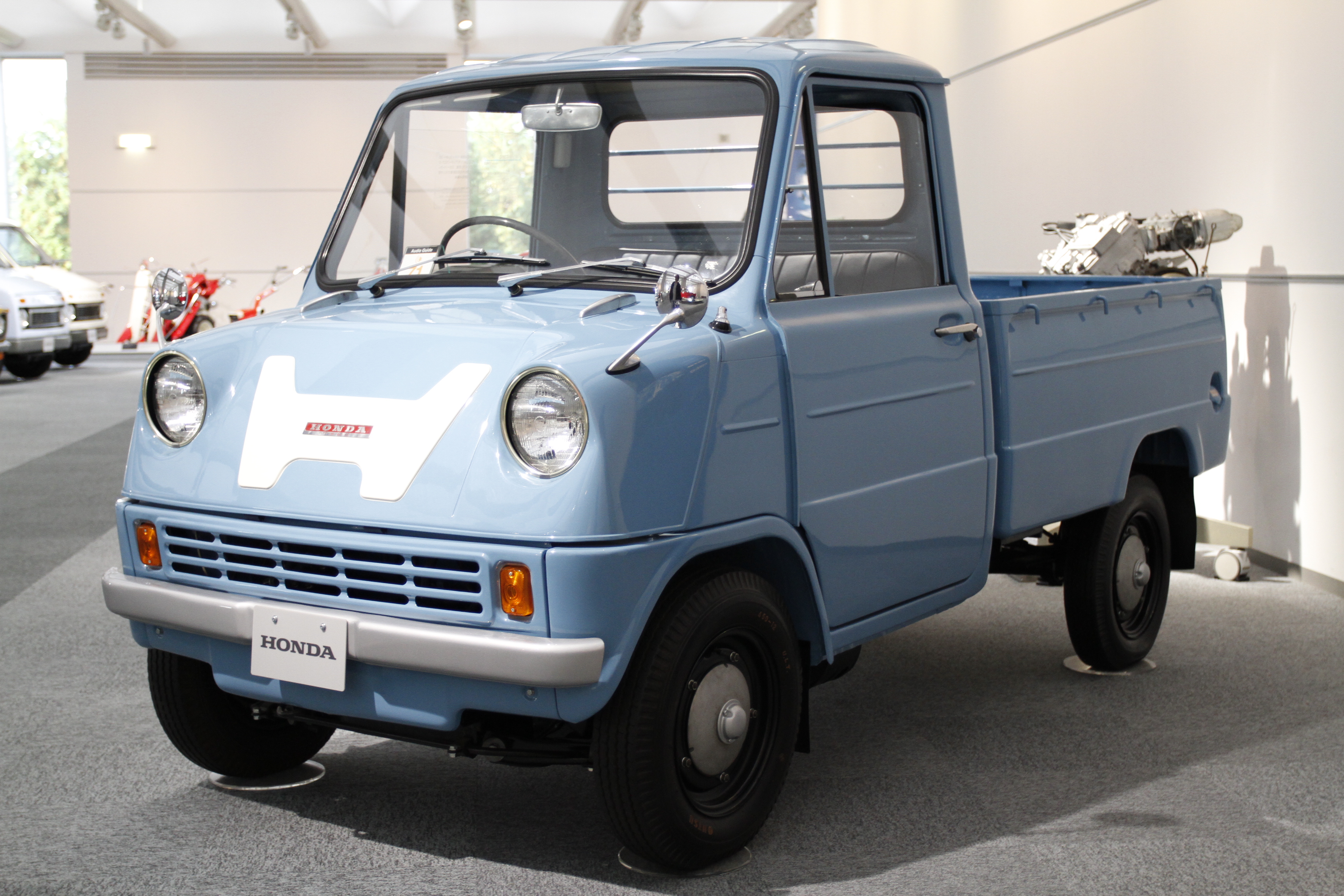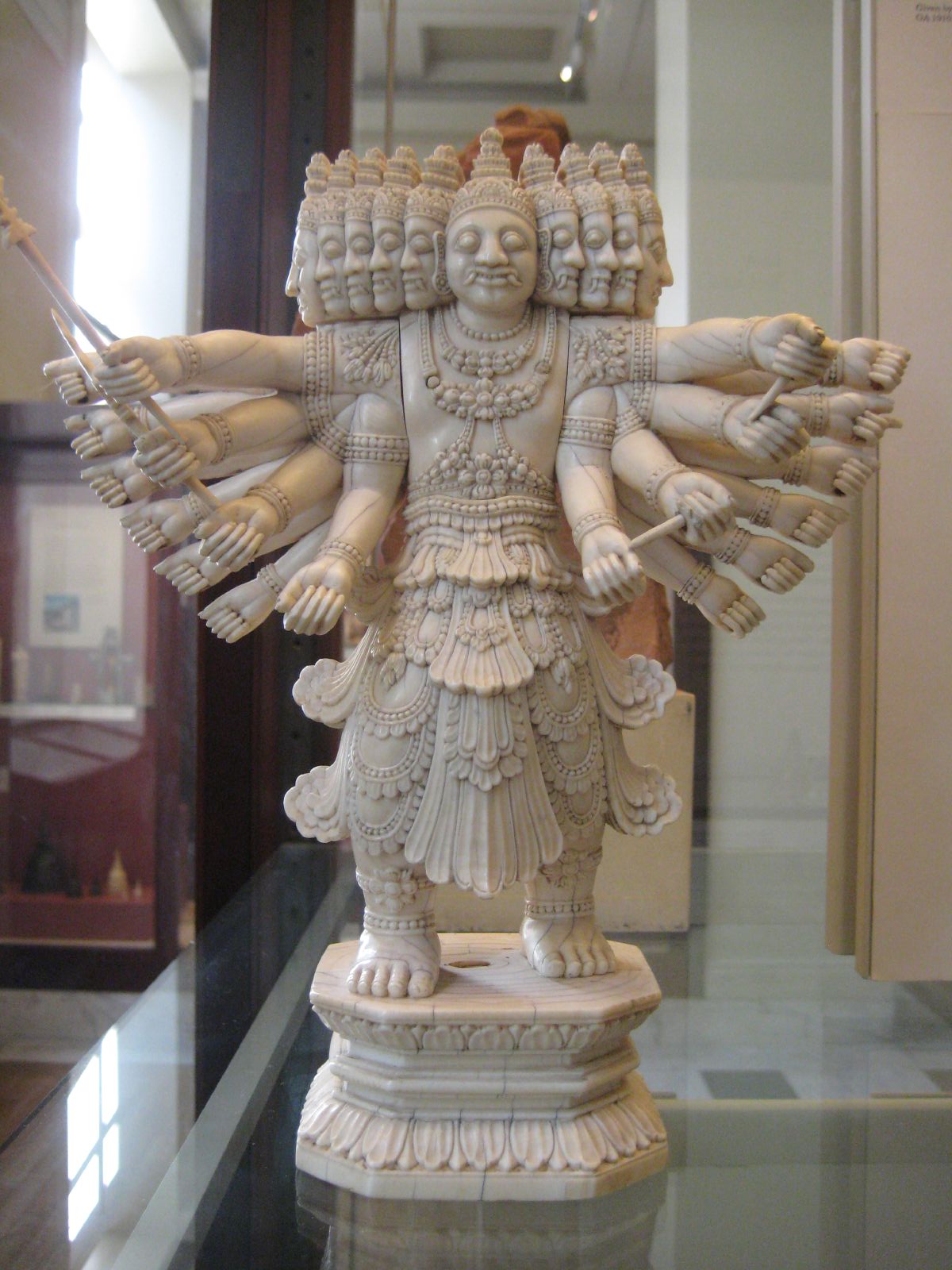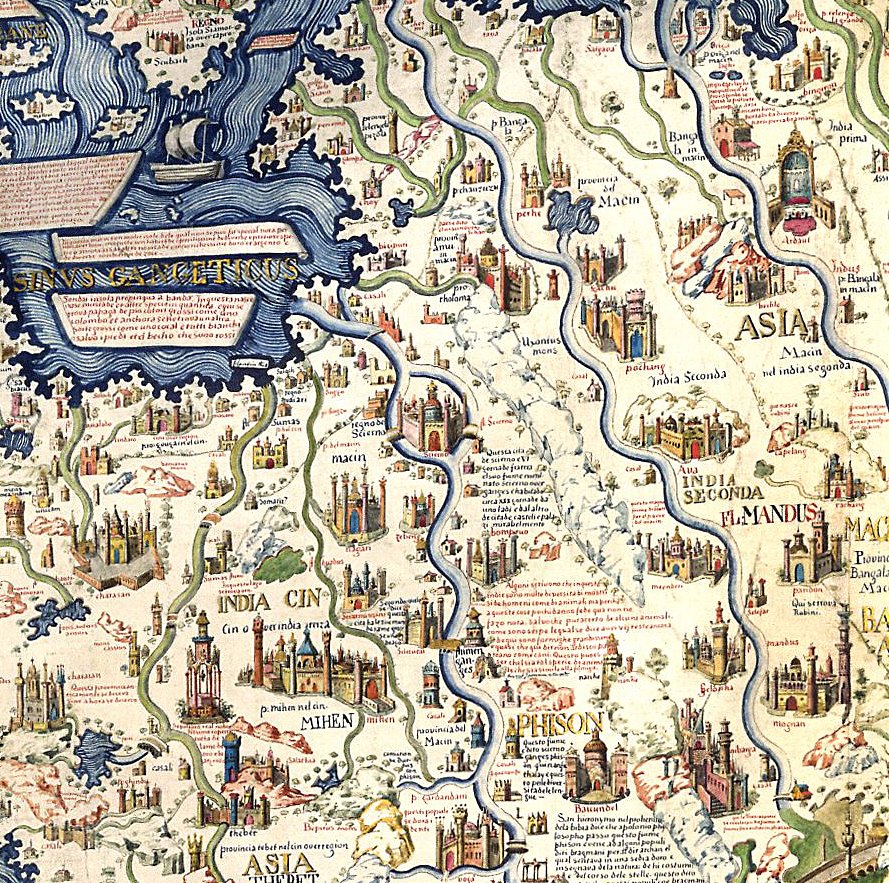|
Honda Mobilio
The is a seven-seat mini MPV produced by the Japanese automaker Honda. The first-generation Mobilio that was produced from 2001 to 2008 and sold exclusively in Japan, was the second model in Honda's "Small Max" series and also took Honda's Global Small Platform and their i-DSI engine. In May 2008, the Freed was introduced, replacing the first-generation model. The second-generation Mobilio, which is based on the Brio, was introduced in September 2013 and went on sale in January 2014 for several emerging markets. __TOC__ First generation (GB1/2; 2001) The first-generation Mobilio was released on 21 December 2001. It is a 1.5-litre compact MPV that was designed with recreational activities in mind. The Mobilio, according to Honda, attained the highest fuel rating in the 7-passenger vehicle class, at . It was discontinued in May 2008 following the release of the Freed. The Mobilio featured a spacious cargo area that was deep and tall and could be configured in 5 modes; ... [...More Info...] [...Related Items...] OR: [Wikipedia] [Google] [Baidu] |
Honda
is a Japanese public multinational conglomerate manufacturer of automobiles, motorcycles, and power equipment, headquartered in Minato, Tokyo, Japan. Honda has been the world's largest motorcycle manufacturer since 1959, reaching a production of 400 million by the end of 2019, as well as the world's largest manufacturer of internal combustion engines measured by volume, producing more than 14 million internal combustion engines each year. Honda became the second-largest Japanese automobile manufacturer in 2001. In 2015, Honda was the eighth largest automobile manufacturer in the world. Honda was the first Japanese automobile manufacturer to release a dedicated luxury brand, Acura, in 1986. Aside from their core automobile and motorcycle businesses, Honda also manufactures garden equipment, marine engines, personal watercraft, power generators, and other products. Since 1986, Honda has been involved with artificial intelligence/robotics research and released their ASIMO rob ... [...More Info...] [...Related Items...] OR: [Wikipedia] [Google] [Baidu] |
Honda Capa
The Honda Capa, short for "capacity", is a tall wagon produced by Honda between 1998 and 2002 for the Japanese market. It was introduced at the 1997 Tokyo Motor Show as the concept car "J-MW." It went on sale on April 24, 1998, with Honda series codes GA4 and GA6. On September 16, 1999 a four-wheel drive version of the Capa was released, using Honda's Full-Time 4wd system. Brake Assist was offered as standard equipment. Due to disappointing sales the Capa nameplate was discontinued in 2002. It was available in Japan through the Honda Primo and Honda Verno dealerships. General information The Honda Capa was developed on the Honda Logo platform and is the first generation of the J Mover series. Its concept was based on a 'Small is Smart' way of thinking. Ease of use in everyday life, compactness, lightness and friendliness to the environment were some of the criteria built into the design. The proposal was that the Capa was to be 'joyful' however this translates better as 'fun'. It ... [...More Info...] [...Related Items...] OR: [Wikipedia] [Google] [Baidu] |
Turbocharger
In an internal combustion engine, a turbocharger (often called a turbo) is a forced induction device that is powered by the flow of exhaust gases. It uses this energy to compress the intake gas, forcing more air into the engine in order to produce more power for a given displacement. The current categorisation is that a turbocharger is powered by the kinetic energy of the exhaust gasses, whereas a supercharger is mechanically powered (usually by a belt from the engine's crankshaft). However, up until the mid-20th century, a turbocharger was called a "turbosupercharger" and was considered a type of supercharger. History Prior to the invention of the turbocharger, |
Honda N Engine
The N series is Honda's first automotive diesel engine, an inline-four for medium-sized vehicles. It uses common rail direct injection, which Honda brands as i-CTDi (Intelligent Common-rail Turbocharged Direct injection). The most notable feature is the aluminium block, which uses proprietary technology in the manufacturing process to provide light weight and high rigidity. Roller chains drive two overhead camshafts. A variable-geometry turbocharger and intercooler are used. N15A1 The i-DTEC engine uses a 2-Stage turbocharger from Wastegate Type & Variable Geometry Turbocharger (VGT) left/right. It enables strong power from about 1,500 rpm. With Diesel particulate filter (DPF), Start-stop system, Exhaust gas recirculation system (EGR) & Small Size Intercooler. Specifications * Bore & Stroke: * Cylinder Layout: inline 4 * Displacement: * Valve Configuration: 16-valve DOHC * Type: i-DTEC * Compression ratio: 16.0:1 * Max boost: * Max power: at 3600 rpm * Max torque: at 1 ... [...More Info...] [...Related Items...] OR: [Wikipedia] [Google] [Baidu] |
Diesel Engine
The diesel engine, named after Rudolf Diesel, is an internal combustion engine in which ignition of the fuel is caused by the elevated temperature of the air in the cylinder due to mechanical compression; thus, the diesel engine is a so-called compression-ignition engine (CI engine). This contrasts with engines using spark plug-ignition of the air-fuel mixture, such as a petrol engine (gasoline engine) or a gas engine (using a gaseous fuel like natural gas or liquefied petroleum gas). Diesel engines work by compressing only air, or air plus residual combustion gases from the exhaust (known as exhaust gas recirculation (EGR)). Air is inducted into the chamber during the intake stroke, and compressed during the compression stroke. This increases the air temperature inside the cylinder to such a high degree that atomised diesel fuel injected into the combustion chamber ignites. With the fuel being injected into the air just before combustion, the dispersion of the fuel is une ... [...More Info...] [...Related Items...] OR: [Wikipedia] [Google] [Baidu] |
I-VTEC
VTEC (Variable Valve Timing & Lift Electronic Control) is a system developed by Honda to improve the volumetric efficiency of a four-stroke internal combustion engine, resulting in higher performance at high RPM, and lower fuel consumption at low RPM. The VTEC system uses two (or occasionally three) camshaft profiles and hydraulically selects between profiles. It was invented by Honda engineer Ikuo Kajitani. It is distinctly different from standard VVT (variable valve timing) systems which change only the valve timings and do not change the camshaft profile or valve lift in any way. Context and description Japan levies a tax based on engine displacement, and Japanese auto manufacturers have correspondingly focused their research and development efforts toward improving the performance of their smaller engine designs. One method for increasing performance into a static displacement includes forced induction, as with models such as the Toyota Supra and Nissan 300ZX which used t ... [...More Info...] [...Related Items...] OR: [Wikipedia] [Google] [Baidu] |
Honda BR-V
The Honda BR-V is an automobile manufactured by Honda since 2016 and mainly sold for emerging markets. It is a subcompact crossover SUV which offers three-row seating as standard or as an option. While being dimensionally bigger, the BR-V is positioned below the more advanced international market HR-V. The first-generation model shares its platform with the second-generation Mobilio, which itself based on the lengthened Brio platform. The second-generation model is built on a separate platform from the Mobilio (shared with the second-generation Amaze and the WR-V instead). Developed by Honda R&D Asia Pacific in Thailand, the BR-V has been manufactured and assembled in several Asian countries, including Indonesia, Thailand, the Philippines, Malaysia, India, and Pakistan, and is also sold in Brunei, Mexico, and South Africa. According to Honda, the name "BR-V" stands for "Bold Roundabout Vehicle". __TOC__ First generation (DG1/2; 2016) On 20 August 2015, the first-gene ... [...More Info...] [...Related Items...] OR: [Wikipedia] [Google] [Baidu] |
Honda Amaze
The Honda Amaze (also known as Honda Brio Amaze for the first generation) is a 4-door subcompact sedan produced by Honda since 2013. Slotted below the City sedan, it is the smallest Honda sedan model , with all generations measured less than in length. It is mainly marketed in India, where sub-4-metre cars are given a lower excise duty compared to longer vehicles. For the first generation, it was offered as the sedan counterpart to the Brio hatchback and shared most of its design and architecture with it, while the second-generation model is built on the separate platform from the Brio (derived from the sixth-generation City instead). __TOC__ First generation (DF1/2; 2013) Markets India The first-generation Amaze debuted in India in April 2013 and developed at Honda R&D Asia Pacific Co., Ltd. in Bangkok, Thailand. Manufactured at Honda's facilities in Greater Noida and Rajasthan, it was claimed to have a localisation level of more than 90%. It was also the firs ... [...More Info...] [...Related Items...] OR: [Wikipedia] [Google] [Baidu] |
Station Wagon
A station wagon ( US, also wagon) or estate car ( UK, also estate), is an automotive body-style variant of a sedan/saloon with its roof extended rearward over a shared passenger/cargo volume with access at the back via a third or fifth door (the liftgate or tailgate), instead of a trunk/boot lid. The body style transforms a standard three-box design into a two-box design — to include an A, B, and C-pillar, as well as a D-pillar. Station wagons can flexibly reconfigure their interior volume via fold-down rear seats to prioritize either passenger or cargo volume. The ''American Heritage Dictionary'' defines a station wagon as "an automobile with one or more rows of folding or removable seats behind the driver and no luggage compartment but an area behind the seats into which suitcases, parcels, etc., can be loaded through a tailgate." When a model range includes multiple body styles, such as sedan, hatchback, and station wagon, the models typically share their platform, d ... [...More Info...] [...Related Items...] OR: [Wikipedia] [Google] [Baidu] |
Honda Cars India
Honda Cars India Ltd. (HCIL) is an automobile manufacturer in India owned by Honda Motor Co. Ltd. The company was established in 1995 as a joint venture called Honda Siel Cars India (HSCI). The company was renamed to HCIL in September 2012 following the sale of 3.16 percent stake owned by Usha International, making it a 100 percent subsidiary of Honda Motor Co. Ltd. Facilities HCIL's first manufacturing plant was built in Greater Noida and began production in 1997. The initial investment into the production plant was estimated to be 4.5 billion, the plant is spread over . The plants original production capacity was estimated to be able to produce 30,000 cars per year, this amount was later updated to 100,000 cars per year when with the addition of a second shift of workers, an expansion to the plant, and improvements in automation. This expansion led to an increase in the covered area in the plant from to over . Honda set up its second plant in India at Tapukara in Alwar Di ... [...More Info...] [...Related Items...] OR: [Wikipedia] [Google] [Baidu] |
Greater Noida
Greater Noida is a Planned community, planned city located in Gautam Buddha Nagar district of the Indian state of Uttar Pradesh. The city was created as an extension to Noida, Noida area under the ''UP Industrial Area Development Act, 1976''. Situated south-east of the capital city of New Delhi, it takes around 30 minutes to travel between the cities via the Noida-Greater Noida Expressway. The city is administered by Greater Noida Industrial Development Authority (GNIDA). History In the early 1980s, the Government of India realised that the rapid rate at which Delhi was expanding would result in chaos. Hence, they planned to develop residential and industrial areas around the capital to reduce the demographic burden. Before Greater Noida City, two areas had been developed—Gurgaon, across the border from Haryana, and Noida, across the border with Uttar Pradesh. Greater Noida Notified Area – 38000 Ha (380 km2) comprising 124 villages. Noida's infrastructure was carefu ... [...More Info...] [...Related Items...] OR: [Wikipedia] [Google] [Baidu] |
Ayutthaya (city)
Phra Nakhon Si Ayutthaya ( th, พระนครศรีอยุธยา, ; also spelled "Ayudhya"), or locally and simply Ayutthaya, is the former capital of Phra Nakhon Si Ayutthaya province in Thailand. Located on an island at the confluence of the Chao Phraya and Pa Sak rivers, Ayutthaya is the birthplace of the founder of Bangkok, King Rama I. Etymology Ayutthaya is named after the city of Ayodhya in India, the birthplace of Rama in the ''Ramayana'' (Thai, ''Ramakien''); (from Khmer: ''preah'' ព្រះ ) is a prefix for a noun concerning a royal person; designates an important or capital city (from Sanskrit: ''nagara''); the Thai honorific ''sri'' or ''si'' is from the Indian term of veneration Shri. History Prior to Ayutthaya's traditional founding date, archaeological and written evidence has revealed that Ayutthaya may have existed as early as the late 13th century as a water-borne port town. Further evidence of this can be seen with Wat Phanan Choeng, w ... [...More Info...] [...Related Items...] OR: [Wikipedia] [Google] [Baidu] |
.jpg)



_(cropped).jpg)

.png)

